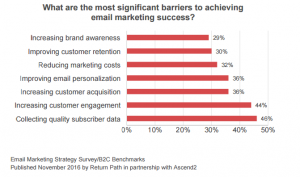
Our central nervous system plays a critical role in sending important information from the body to the brain. The brain, in turn, sends information back to the body to take the appropriate action. This feedback loop between body and brain is critical to an organisms survival. Similarly, organizations need important information to flow between employees and leadership. This feedback loop is also critical to the organizations survival. However, this is largely broken in many mid to large sized organizations.
Employee Feedback Loops Are an Organization’s Information Nervous System
Our central nervous system comprises millions of feedback loops between cells and the brain. Cells are organized in a way that allows for new information to be collected, transmitted, processed, and actioned. Place your hand on a hot stove and a pain message gets sent to your brain. Your brain moves your hand off the stove and the cells in your hand send a new message that danger is averted, but maybe do something to soothe the burn. In a living organism, there are specialized jobs for each cell to perform to make the entire system work.
We can also use this as an analogy for the corporate information nervous system.
An organization’s employees know 100% of the organization’s problems, whether they’re related to customer experience, employee engagement, or operational inefficiencies. But unfortunately, organizational communication isn’t as effective as our own central nervous system. Many organizations are not equipped to gather information efficiently from all levels of the organization.
Sidney Yoshida first coined the term “iceberg of ignorance” as a way to describe how knowledge of problems does not travel up the hierarchy. In his study, leadership could only identify 4% of the organizational problems known to frontline employees. It’s scary to think that so few problems are known or understood by the very people responsible for taking action. Can you imagine if our brain only knew 4% of the problems our cells were aware of? Yet, that’s how many organizations try to operate today.
Feedback Loops Enable the Agile Adaptation Needed for Today’s Constantly Changing Environment
Mid and large sized organizations need information to flow from their frontline, where most primary information is collected, to the central processing area — the brain/C-suite where decisions are made. To accomplish this, leadership needs to take an active role in soliciting input from the frontline.
The Genba (or Gemba) Walk is a lean management philosophy that attempts to increase information gathering from where value is created at the frontline. Classically, a Genba has been a physical location where managers should regularly visit to gain insight into the processes that create value. Every organization has a Genba — the place they create value — but the location of that Genba is different for almost every business. In manufacturing, the Genba is on the factory floor. In retail, the Genba is in the store near the P.O.S. system. In a hospital the Genba, is in the patient’s rooms.
This paper looks at how the iceberg of ignorance applies to customers complaints and ways to create a customer feedback loop to make more customer issues known to management.
Another area that’s been a lot of focus is employee engagement. Employee feedback has drawn a lot of attention recently. Similarly, an employee feedback loop can help management better understand engagement issues.
There are many ways feedback loops can be applied. But the key here is that it’s leadership’s responsibility to ensure that the tools and processes are in place to solicit, manage, and act on feedback from across the organization if they do not wish to be ignorant.
GE as an Example of Agile Adaptation
In nature, the ability to adapt quickly has historically made all the difference. In business, the same can be said — companies that have remained relevant and sustained great results year over year have done so by adapting to changing conditions, and always being in a position to thrive/survive. GE is a great example of a company that’s using its frontline and customers to crowdsource ideas for continuous innovation. Its culture acknowledges that leadership does not carry all of the answers and strives to collaborate with experts and entrepreneurs to solve some of the world’s most pressing issues:
“Well, GE, across all of our industrial businesses, really depends a lot on innovation. So whether it is energy, aviation or health care, innovation is really our lifeblood… Now, in health care, we invest over a billion dollars every year in research and development and, in my business, which is the equipment part of the business, we spend about $ 800-million of that, and it drives a tremendous amount of focus, not only on new hardware but also software, process – and our innovation delivers about 60 or so new products every year. Those 60 products generate over $ 2-billion of sales in the year that we introduce them and that represents about 25 per cent of our global equipment sales, which means that our portfolio is turning over every four years.” Tom Gentile – CEO of GE Healthcare’s Health Systems Division
GE has stayed relevant by adapting. The healthcare division has literally reinvented themselves every four years, based on the changing needs of the markets. What’s more: they have planned to do it. For GE, change is a given. They don’t just acknowledge that they need to be a different company, they plan to be one — and act accordingly. This is only possible if the company has a way to process information — most critically, frontline information. This can take many shapes and forms — from product ideas to processes — but the fundamental function of connecting your receptor cells with your decision-making center remains the same.
Business & Finance Articles on Business 2 Community(70)
Report Post








